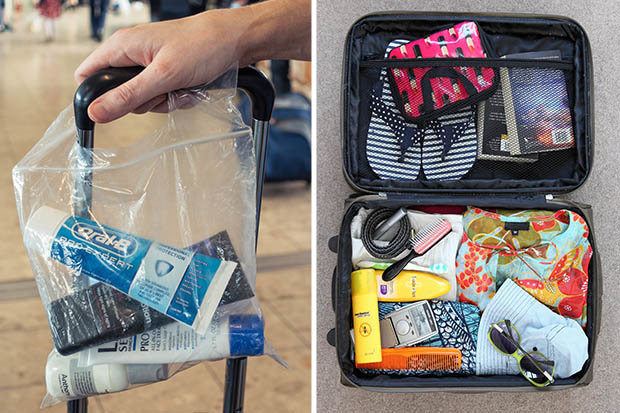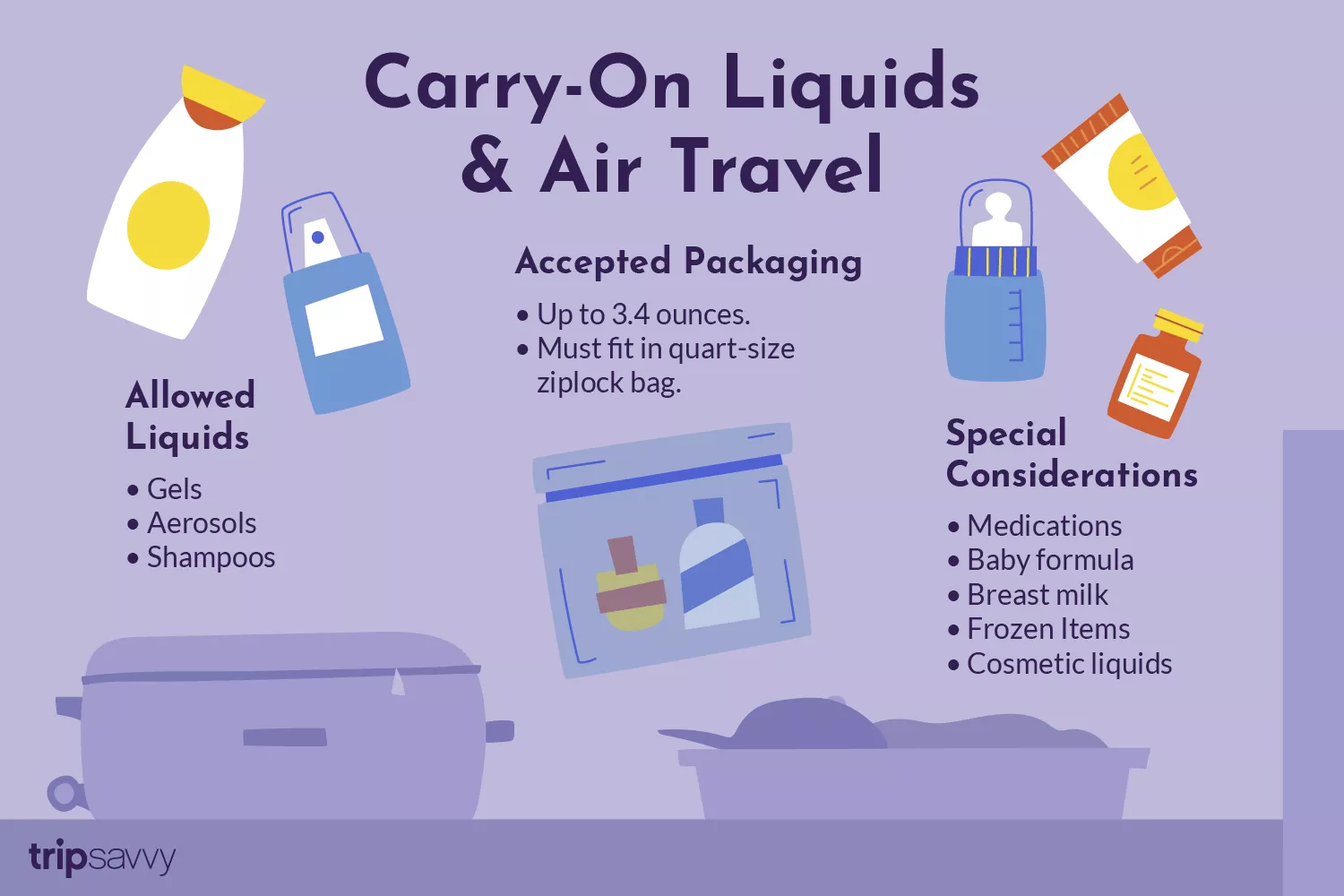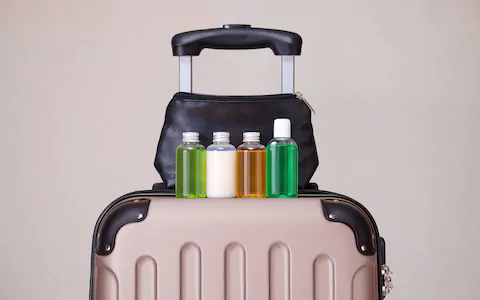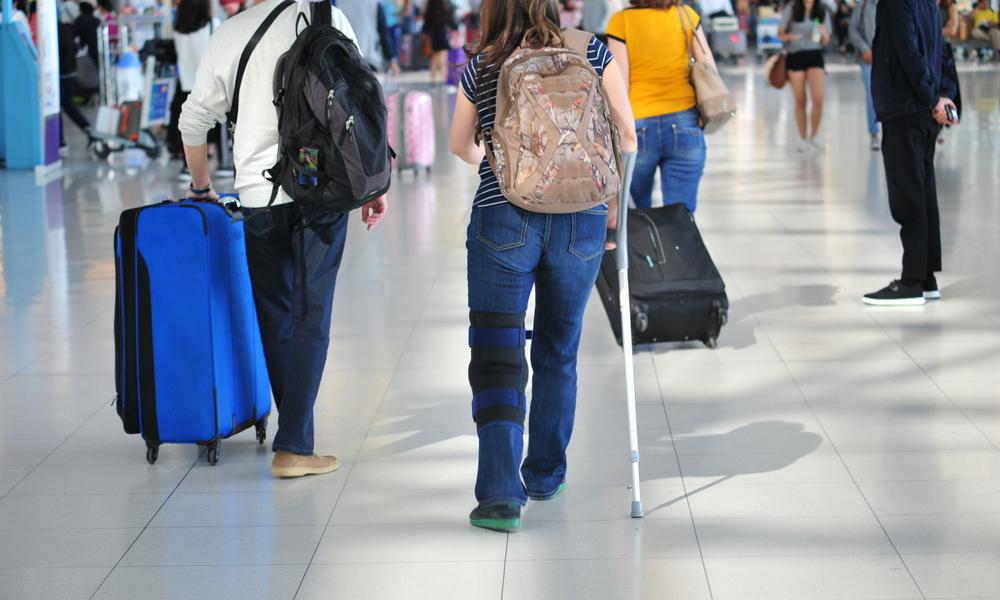Occasionally, travelers find themselves confused regarding the nature and quantity of liquids they are allowed to package in hold luggage, and hand luggage any time they're taking a flight. Honestly, the liquids in hold luggage issue get confusing anytime states and Transportation Safety Administration (TSA) updates their policies and restrictions. But, that does not mean you will get worried anytime you're planning to take a flight. There are universal TSA guidelines attached to liquid packaging in hold luggage. This blog will take you through such guidelines step after another.

Different Liquids and TSA Rules that Bid Them Onboard
To optimize air travel safety, the Transportation Security Administration (TSA) in 2006 came up with strict rules to govern the packing of liquids in airplanes for transit. This was after an attempted attack of UK airlines using liquid explosives. Since then, TSA 3-1-1 rules were set to limit the amount of liquid to be packaged in hold luggage (carry-0n cabin luggage).
1. What kinds of liquids are allowed in carry-on cabin luggage?
- Aerosols
Aerosols and roll-on deodorants are regarded as liquids in air transport regulations. You'll, therefore, need to observe the set limits for in-cabin liquid luggage besides packing them in transparent containers of capacity 100ml.
- Liquids for special dietary requirements
If airline food and drinks are too bland for your taste, you may opt to carry your snacks on board. Though there are no restrictions for solid foods like fruits, sandwiches, and biscuits, liquid foods such as jam and soup still face the 3-1-1 restrictions for hand luggage as other liquids. You may also be required to declare any foodstuff flown into the UK from outside the EU.
- Liquid medicinal supplies
You are permitted to carry vital liquid medicines, medical skin creams, cooling gel, and inhalers as hand luggage in a plane. However, you're required to have a note from your licensed health expert explaining why you need these supplies during the flight.
- Baby milk and liquid baby food
Traveling with an infant or baby is in itself challenging. To ease your journey, you are allowed to carry sterilized water, sufficient liquid baby milk, and liquid baby formula. Frozen baby milk, however, isn't allowed in hold luggage. Besides, each container of liquid breast milk should hold a maximum 2,000ml and is screened separately by airport customs security.
- Liquid toiletries and cosmetics
You may carry your chosen liquid cosmetics and toiletries including creams, oils, lotions, mascara, foam lip gloss, perfumes, toothpaste, hairspray, shower gel, and spray deodorants as hand luggage in a plane as long as you observe the set limits. You are required to discard any excesses or check it in alongside the other liquids in hold luggage.
- Duty-free liquids
Travelers are allowed to carry any permitted liquid such as wine and perfumes that you purchase from the airline or airport as hold luggage. However, you are required to keep these liquid items and accompanying receipts sealed inside the provided security bag.
You are only allowed to open this security bag upon arrival at your destination. Still, airport security may need to open your security bag and the bottles therein for inspection. In case you have a connecting flight, and this happens, you should alert the inspecting security officer to re-seal your liquid provisions in a new security bag.

2. What kinds of liquids are banned?
The TSA forbids the transport of some liquids in hold luggage for safety purposes. In this regard, you are not allowed to carry the following liquids into an aircraft:
- Oxidizing liquids
Bleaching liquids and other liquid oxidizing agents are prohibited from passenger plane transit.
- Organic peroxides
All organic peroxides are banned from transit by passenger aircraft.
- Infectious liquids
Liquids like live virus cultures that have the potential to cause illnesses shouldn't be taken on board a passenger plane whatsoever.
- Inflammable liquids
Any liquid such as aerosol spray paint that's likely to burst into flames is forbidden from being transported as hold or in-cabin luggage.
- Toxic liquids
The TSA expressly prohibits the transport of poisonous liquids like corrosive acids, radioactive liquids, alkalis, caustic soda, insecticides, and liquid poisons in planes.

3. How much liquid can you take in your hand luggage?
When packing your luggage for a flight, you can take liquids in hold luggage since there are minimal restrictions to the amounts of authorized liquids you can carry there. Still, some liquid provisions are crucial for a healthy and comfortable flight, thus need to be with you in the cabin.
The TSA uses the 3-1-1 rule to restrict the amount of liquids you can take into the plane's cabin in a carry-on bag. This rule stipulates that:
- No more than 100ml
Each of your liquids' containers must not exceed 3.4 ounces (100ml). If you're to carry any liquid, you have to divide that liquid into 100ml plastic transparent bottles.
- No more than 20cm x 20cm
Note, all the liquid containers you're to carry must fit inside one 1-quart of a resealable transparent plastic bag. Additionally, the capacity of these bags range at 1 liter and measure approximately 20cm by 20cm. The bag is supposed to be clear so that airport and airline security personnel can easily see its contents during hand luggage inspection.
- Maximum of 1 bag
Every passenger can carry a maximum of 1 bag of liquids in their carry-on bag.
- 1-quart clear plastic bag
All your containers must fit snugly into a 1-quart clear plastic bag to allow easy sealing. The transparent plastic bag should not be tied or knotted at the top as this can obscure the inspecting personnel's view. It also eases access to your liquids' containers during the flight.

Other Non-Liquid Baggage Bans
To ensure the safety and comfort of all passengers on board a plane, the TSA has other set bans on specific non-liquid items. These objects aren't allowed into the plane whatsoever, whether in hand or hold luggage.
-
Gas cylinders and tear gas equipment
-
Wet-cell car batteries
-
Instruments containing mercury
-
Components Containing magnets
-
Pyrotechnics and fireworks
-
Non-safety matches
-
Firelighters alongside other combustible and flammable items
-
Creosote, quicklime, oiled paper
-
Explosives, ammunition, and detonators
-
Smoke canisters and smoke cartridges
-
Sharp objects that can be used as weapons
Bottom Line
Though each airline has a specific set of regulations governing hand and hold luggage liquids, the TSA rules are fairly consistent throughout the air transport sector. You should, therefore, take a keen look into their provisions regarding air luggage transport before diving into packing your handbag or suitcase for your flight. Further, you can explore convenient luggage packing approaches to ensure your hand and hold luggage arrive safely. You don't want the liquids therein spilling and ruining your laundry.
